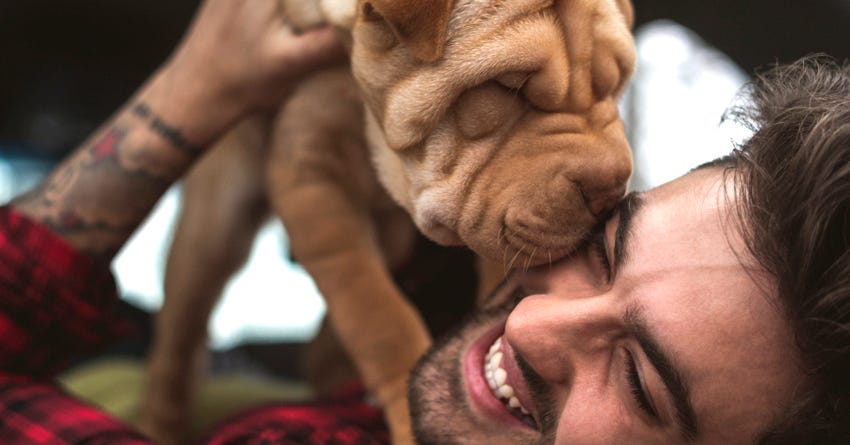Teaching Your Puppy to Stay Close

Young puppies under four months of age will eagerly stay close to and follow an adult dog or a person.
This instinct prevents the puppy from wandering too far and helps keep them safe. At about four months of age, though, this begins to fade and the puppy, being braver now, will start exploring. He may also ignore your calls for him to come and sometimes may even run from you. As far as the puppy is concerned he's not being bad; he's just exploring his world. Unfortunately, though, these explorations can get him into a lot of trouble. Teaching your puppy to stay close to you is important and will be a skill you can use for the rest of his life. Your ultimate goal, when your puppy is trained and mentally mature, is that he can be off leash and he'll keep an eye on you and remain close to you. He doesn't have to be within arm's reach at all times; that isn't necessary unless you ask him to be closer. However, he should remain close enough that you can talk to him and he can see you.From 8 to 12 Weeks of Age
This is the best age to begin this training because your puppy's instincts tell him to follow you. Have some good treats or a favorite toy in your pocket and with your puppy off leash in the house, walk a few steps away. In a happy tone of voice tell your puppy to come. As he walks towards you, lean down, praise him and offer him a treat or his toy. You can use any word you wish for this exercise. Just remember for your dog's clarification, each word in your shared vocabulary can only have one meaning. You could use 'follow me' if you wish. I use 'here' as I don't use that for anything else when talking to my dogs. Only do this four or five times and then toss his ball or play with him with another toy. The play is a reward just as the treat is, plus it gives him a chance to relax from the learning for a moment or two. After the play, repeat the stay close exercise and play some more. Keep in mind puppies have a short concentration span; don't train so much that your puppy gets bored, tired or looses interest. When your puppy follows you in various parts of the house, then go out in the backyard and repeat the same exercises. At this point, don't walk too far away from him before asking him to follow you; it would be easy for your puppy to get distracted and you don't want to create failure. Instead, set him up to succeed. ©istockphoto/M_a_y_a
©istockphoto/M_a_y_a

